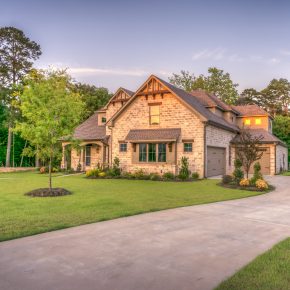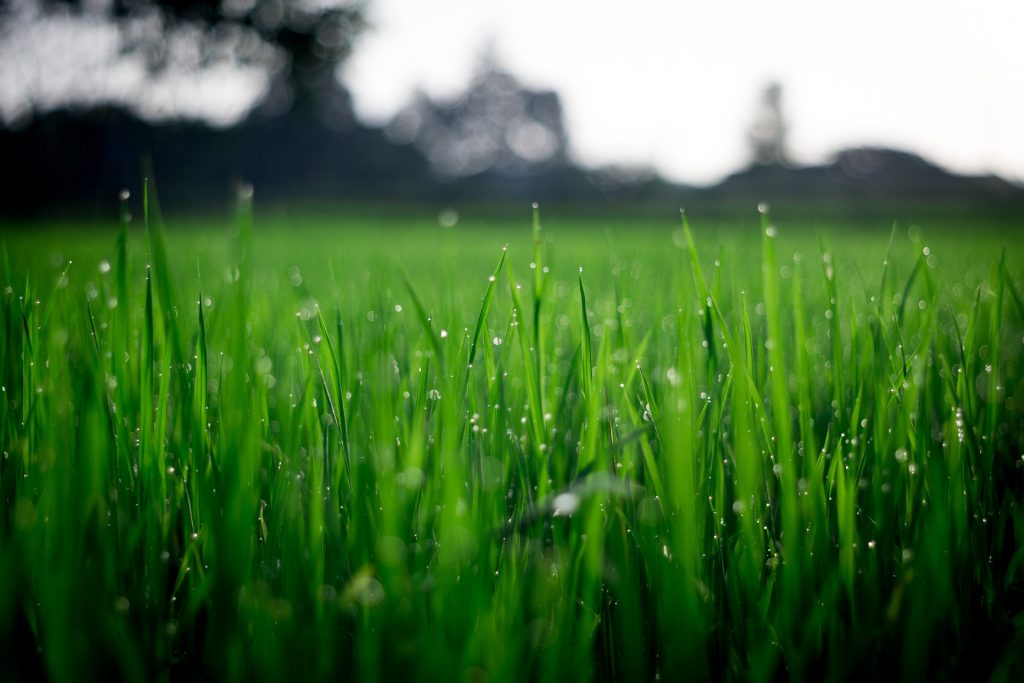
Lawn Revitalisation: Examining the Pros and Cons of the Popular Lawn Maintenance Tools
A lush, vibrant lawn is a sight that can bring immense pride to homeowners and elevate the overall appeal of any property. However, achieving that picture-perfect greenery requires more than regular watering and mowing. With the vast array of lawn maintenance tools available today, it can be overwhelming to discern which ones are truly worth the investment.
Lawn revitalisation encompasses various methods and techniques aimed at restoring or improving the health, appearance, and resilience of your turf. The key to successful revitalisation lies in identifying the specific issues plaguing your lawn and selecting the appropriate tools to address those concerns.
From aerators to dethatchers and everything in between, each tool offers unique benefits while also having potential drawbacks.
This comprehensive guide will walk you through an in-depth analysis of popular lawn maintenance tools, weighing their advantages and disadvantages. This will help you decide which tools are best suited for your lawn care needs.
Read on to learn more about the differences in tools such as lawn aerator vs dethatcher vs scarifier, and others so that you can revitalise your garden like never before.

Aerators: Breathing New Life into Your Lawn
Aeration is a process that involves perforating the soil with small holes to ensure better air, water, and nutrient flow to the grass roots. Lawn aerators come in two main types — core and spike aerators.
While spike aerators are cheaper and easier to use, they can cause more harm than good as they often compact the soil around the holes. Core aerators, on the other hand, remove small plugs of soil from the ground, promoting healthy root growth and reducing soil compaction.
One of the benefits of aerating your lawn is that it allows your grass to absorb nutrients and water more efficiently, leading to a healthier and lusher-looking lawn. Aeration also helps reduce soil erosion and improves the effectiveness of fertilisers and other lawn treatments.
However, over-aeration can damage your lawn’s roots, so it’s essential to carefully assess your lawn’s needs before deciding on this method.
Dethatchers: Eliminating Unwanted Thatch Buildup
Thatch is a layer of dead grass, leaves, and other organic matter that accumulates on top of your soil over time. While some thatch is beneficial for your lawn as it provides insulation and moisture retention, too much can suffocate the grass and block vital nutrients from reaching the roots. Dethatching involves removing this excess layer either manually or with a specialised tool called a dethatcher.
Dethatching can help improve your lawn’s overall health by allowing more air, water, and nutrients to penetrate through to the grass roots. It can also boost your lawn’s resistance to pests and diseases while making it look neater and more uniform. However, excessive dethatching can damage the grass and leave your lawn vulnerable to drought stress and other issues.
Overseeders: Boosting Turf Density and Appearance
Overseeding focuses on planting grass seeds directly into an existing lawn to enhance its density, colour, and texture. Overseeders are specialised machines that can distribute seeds evenly across your lawn, ensuring no bare patches or thinning areas.
Overseeding can help improve your lawn’s overall appearance and fill in any gaps that have developed due to weather damage or other factors. It can also increase your lawn’s resistance to pests, weeds, and diseases while improving its ability to handle heavy foot traffic and other activities.
However, overseeding requires proper preparation, such as dethatching or aerating, to ensure the new seedlings have enough space and nutrients to grow.
Topdressers: Enhancing Soil Quality and Lawn Health
Topdressing involves spreading a thin layer of organic matter, such as compost or sand, over your lawn to improve soil quality and provide essential nutrients for the grass roots. Thanks to top dressers, you don’t have to do it by hand. Instead, you can use a neat machine to evenly distribute the top dressing material across your lawn.
Topdressing can help improve soil structure, drainage, and nutrient retention while reducing soil compaction and erosion. It can also promote healthier grass growth, reduce weed infestations, and improve your lawn’s resistance to pests and diseases.
Just bear in mind that improper application of topdressing material can lead to unevenness and damage to your lawn, so you need to be extra careful when using a topdresser.
Vertical Mowers: Encouraging Healthy Grass Growth
Vertical mowers, also known as power rakes or verticutters, are specialised machines that have vertical blades that cut through the soil surface to remove unwanted thatch buildup. Its main advantage is the fact that it helps avoid damaging any healthy blades of grass. This method also promotes healthy grass growth by stimulating new root development.
Vertical mowing can help improve the overall health and appearance of your lawn. It can also enhance water penetration through the soil while improving air circulation. While dethatchers aggressively dig into the root system in order to pull out thatch, vertical mowers lightly tickle the soil and are gentle on the grass.
Rolling Lawn Levelers: Smoothing Out Uneven Terrain
Rolling lawn levelers use a heavy roller to smooth out uneven areas on your lawn, such as bumps or depressions. This process can help improve water drainage and prevent soil erosion while giving your lawn a smoother and more level appearance.
Lawn levelling can also help improve the overall health and aesthetic appeal of your lawn by reducing the risk of trip hazards and other safety concerns. It can also enhance the effectiveness of lawn care treatments and reduce the need for frequent maintenance.
However, excessive rolling can lead to soil compaction and damage to grass roots, so it’s essential to carefully assess your lawn’s needs before using this method.
In Conclusion
Revitalising your lawn can be a challenging but rewarding task that requires careful planning and execution. Still, it is crucial if you want to maintain a lush and healthy lawn, and selecting the right tools for the job can make all the difference.
From aerators to dethatchers, overseeders, topdressers, vertical mowers, and rolling lawn levelers, each tool offers unique benefits and potential drawbacks. When choosing the appropriate tools, it’s vital to consider your lawn’s specific needs and the issues you wish to address.
By understanding the pros and cons of these popular lawn maintenance tools, you can make informed decisions to ensure your lawn remains vibrant, healthy, and resilient for years to come. Remember to be patient and persistent in your efforts, and don’t hesitate to seek professional help if needed.
Latest news

4th March 2025
Gilberts Proves How to Balance Cost-Effective Restoration
Hidden talents have been revealed in the renovation of an iconic 1930s art deco building to transform it into a modern entertainment venue – and Gilberts Blackpool ventilation features there…
Posted in Air Conditioning, Articles, Building Industry News, Building Products & Structures, Building Services, Case Studies, Facility Management & Building Services, Heating, Ventilation and Air Conditioning - HVAC, Restoration & Refurbishment, Retrofit & Renovation
4th March 2025
S. Norton Group showcases £20m shredder for metals recycling CEOs
S. Norton Group hosted a tour of its latest £20m investment in state-of-the-art shredder technology for 17 senior leaders in the European metals recycling industry.
Posted in Articles, Building Industry News, Building Products & Structures, Building Services, Case Studies, Facility Management & Building Services, Plant, Equipment and Hire, Posts, Site Preparation, Sustainability & Energy Efficiency, Waste Management & Recycling
28th February 2025
Passivent ventilation solutions are top of the class
Passivent has supplied a combination of Hybrid Plus2 Aircool ventilators and Hybrid Plus Airstract roof ventilation terminals for a new London primary school.
Posted in Air Conditioning, Articles, Building Industry News, Building Products & Structures, Building Services, Case Studies, Ceilings, Facility Management & Building Services, Heating, Ventilation and Air Conditioning - HVAC, Restoration & Refurbishment, Retrofit & Renovation, Roofs, Sustainability & Energy Efficiency, Ventilation, Walls
28th February 2025
Troldtekt: New acoustic liner ensures good acoustics and easy handling
Both a building’s users and its developers have a good reason to get excited about the new Troldtekt Plus 25 panels. This specially developed acoustic panel sets a high standard for both sound absorption and building efficiency.
Posted in Acoustics, Noise & Vibration Control, Articles, Building Industry News, Building Products & Structures, Building Services, Building Systems, Ceilings, Facility Management & Building Services, Floors, Innovations & New Products, Insulation, Interior Design & Construction, Interiors, Restoration & Refurbishment, Retrofit & Renovation, Timber Buildings and Timber Products, Walls
 Sign up:
Sign up: